Featured Images
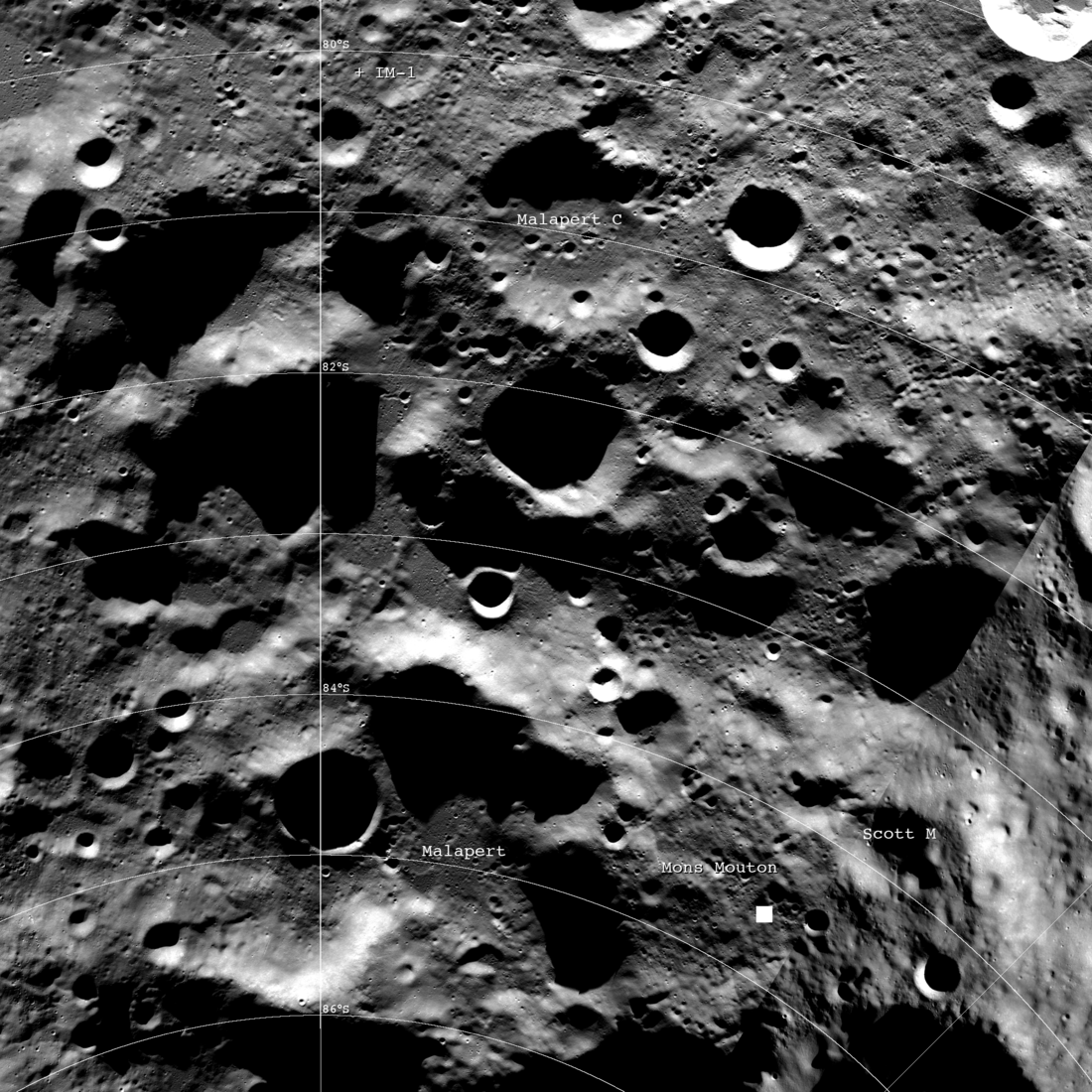
IM-2 Landing Region
The Intuitive Machines IM-2 Nova-C lander (Athena) is currently scheduled to land on Mons Mouton on 6 March 2025 (predicated upon a launch before the 2nd of March). The IM-1 Odysseus landing site is indicated at the center top, and the...
Published on 26 Feb 2025
First to See the Farside
First photograph (BW) taken of the famous Apollo 8 Earthrise sequence, the following images were acquired with color film [AS08-13-2329, NASA].
Published on 24 Dec 2024
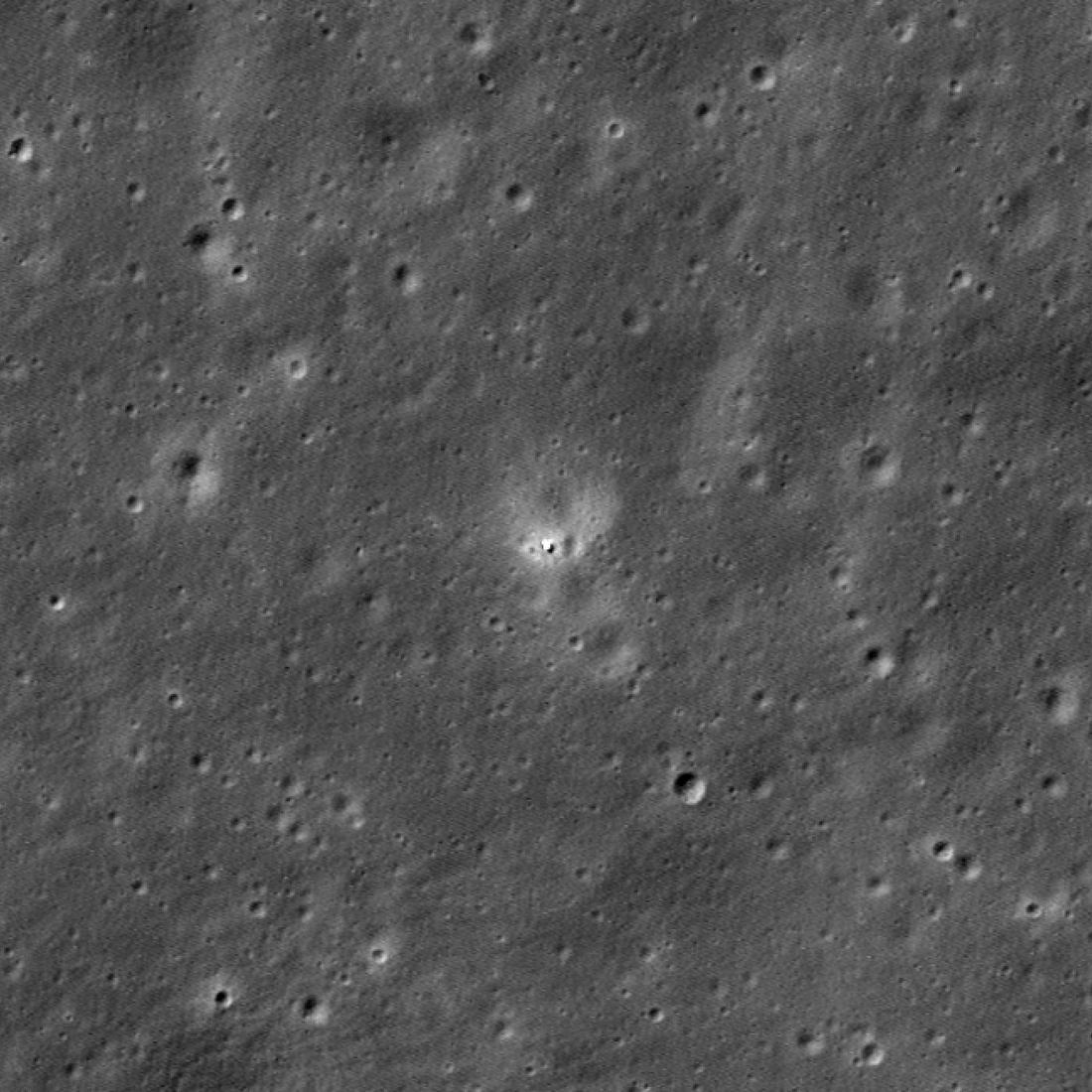
First Look: Chang'e 6
This image from NASA's Lunar Reconnaissance Orbiter Camera shows Chang'e 6 in the Apollo basin on the lunar farside on 07 June 2024. The lander is seen as the small cluster of bright pixels in the center of the image. Image is 552...
Published on 14 Jun 2024
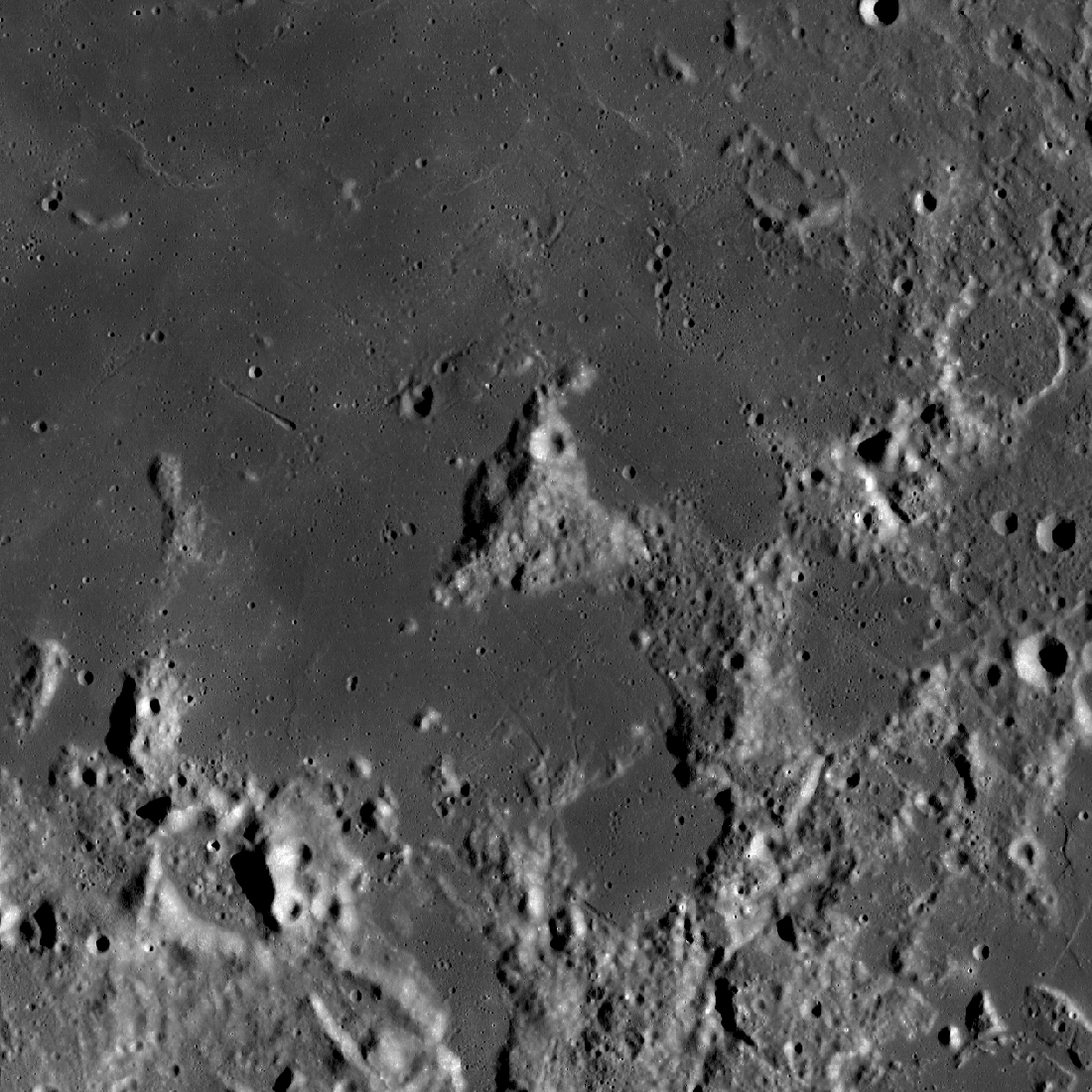
Mount Marilyn: A Lunar Love Story
Mount Marilyn, with its distinctive triangular shape, served as an important navigation landmark for the Apollo 11 astronauts. Portion of LROC Wide Angle Camera mosaic, 138 km wide [NASA/GSFC/Arizona State University].
Published on 31 Aug 2023
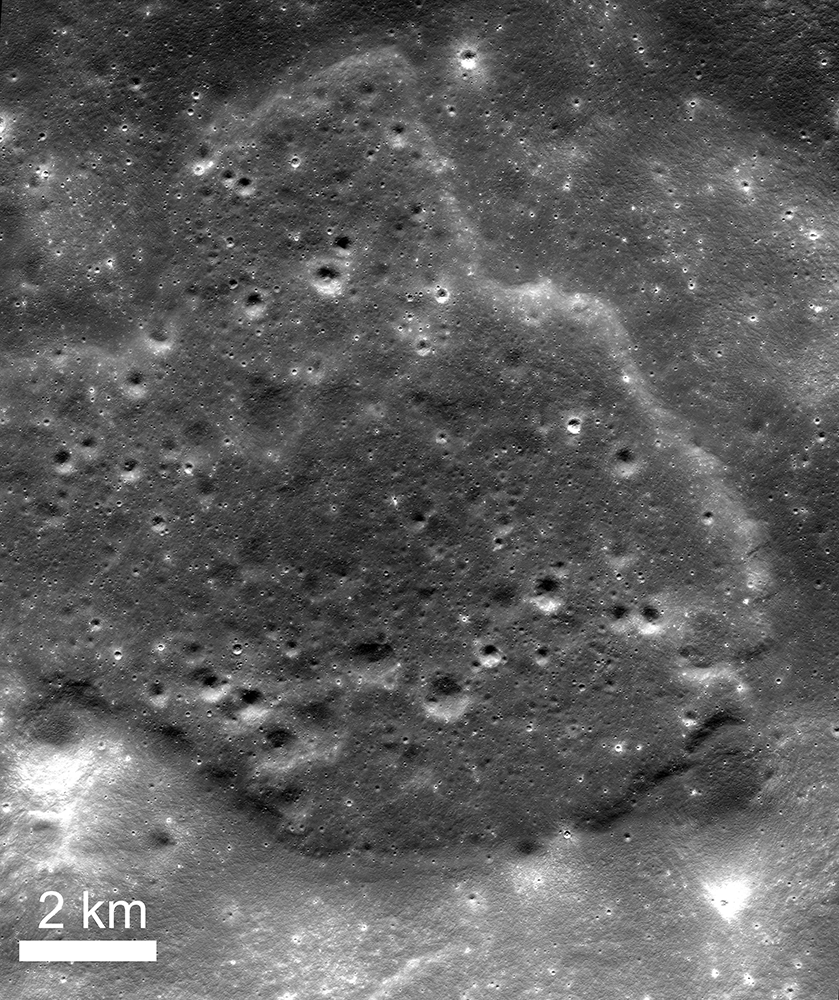
Ancient Impact Melt
Lobate margin of ancient impact melt flow within a nameless farside crater, 45.84° S, 227.32° E, NAC M1117380495LR [NASA/GSFC/Arizona State University].
Published on 28 Dec 2022
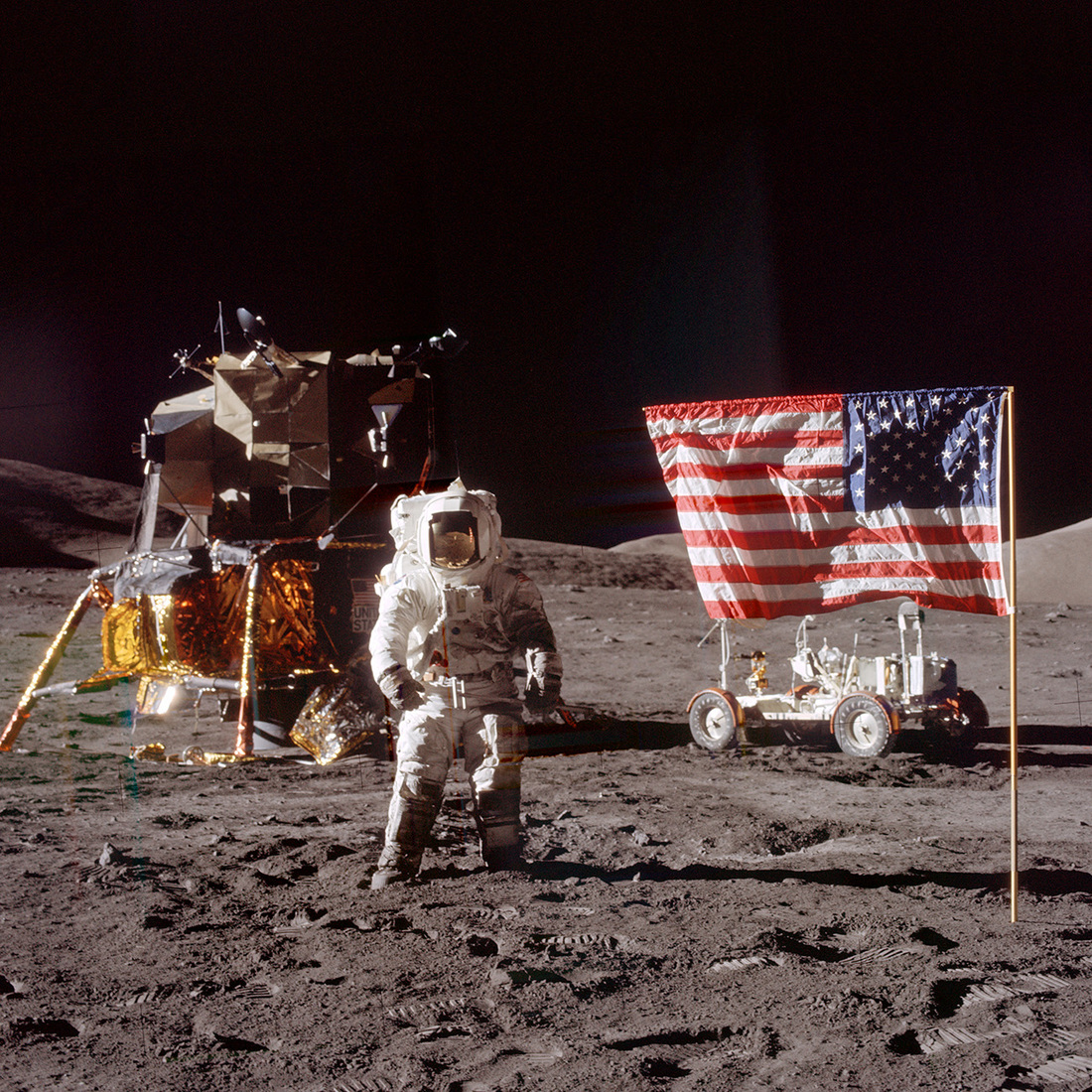
Apollo 17 Remains Unchallenged After Fifty Years
Fifty years ago, the Apollo 17 crew concluded a series of human exploration missions that remain, like their footsteps, some of the greatest achievements in human history. Apollo 17 handheld image (AS17-134-20382) of astronaut Harrison...
Published on 10 Dec 2022
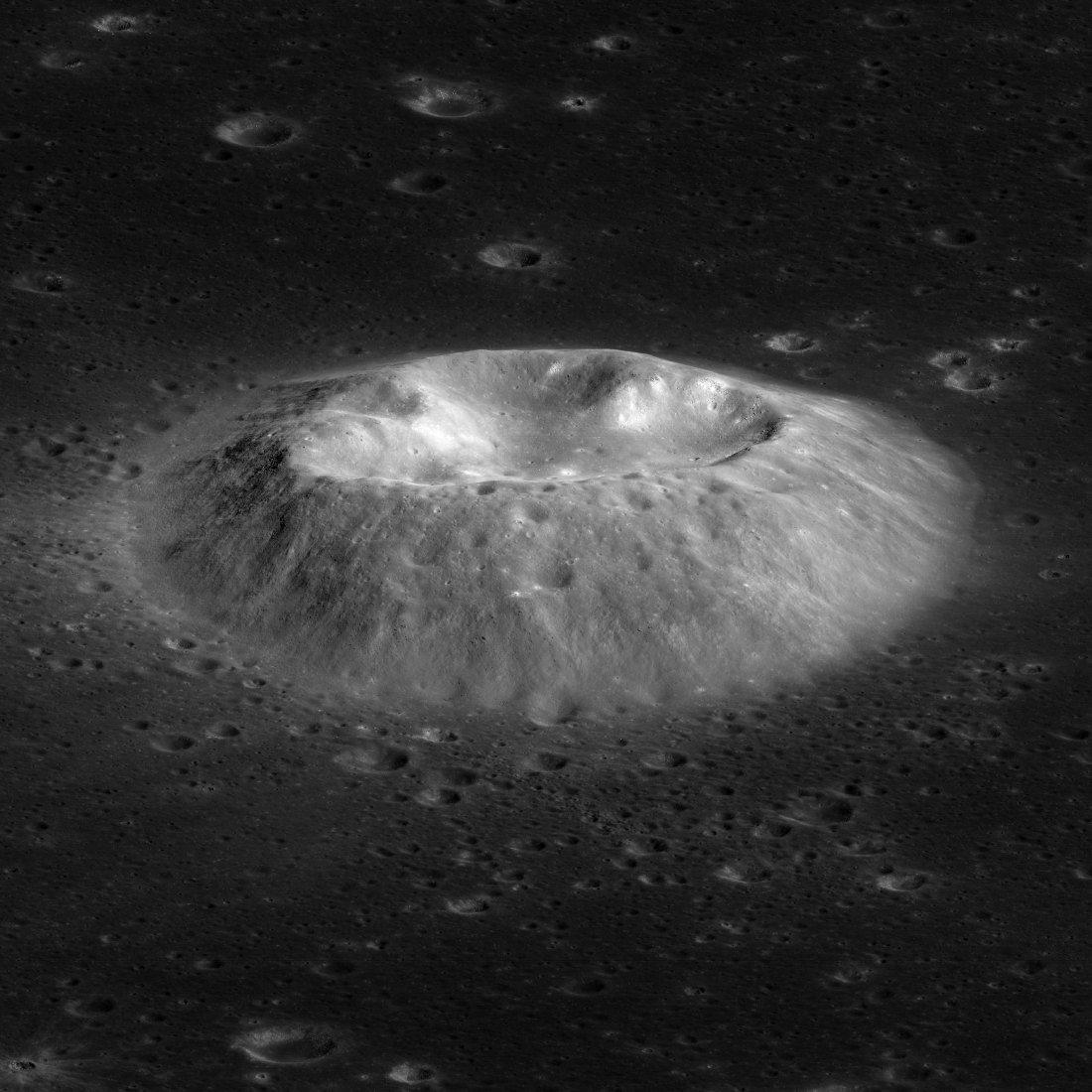
Silicic Volcanoes on the Moon
The silicic volcano Mairan T (41.79°N, 311.61°E) stands over 600 meters tall and in stark albedo contrast to the surrounding dark mare basalts of Oceanus Procellarum. The view is from west-to-east, scene is 6.6 kilometers wide, NAC...
Published on 11 Oct 2022
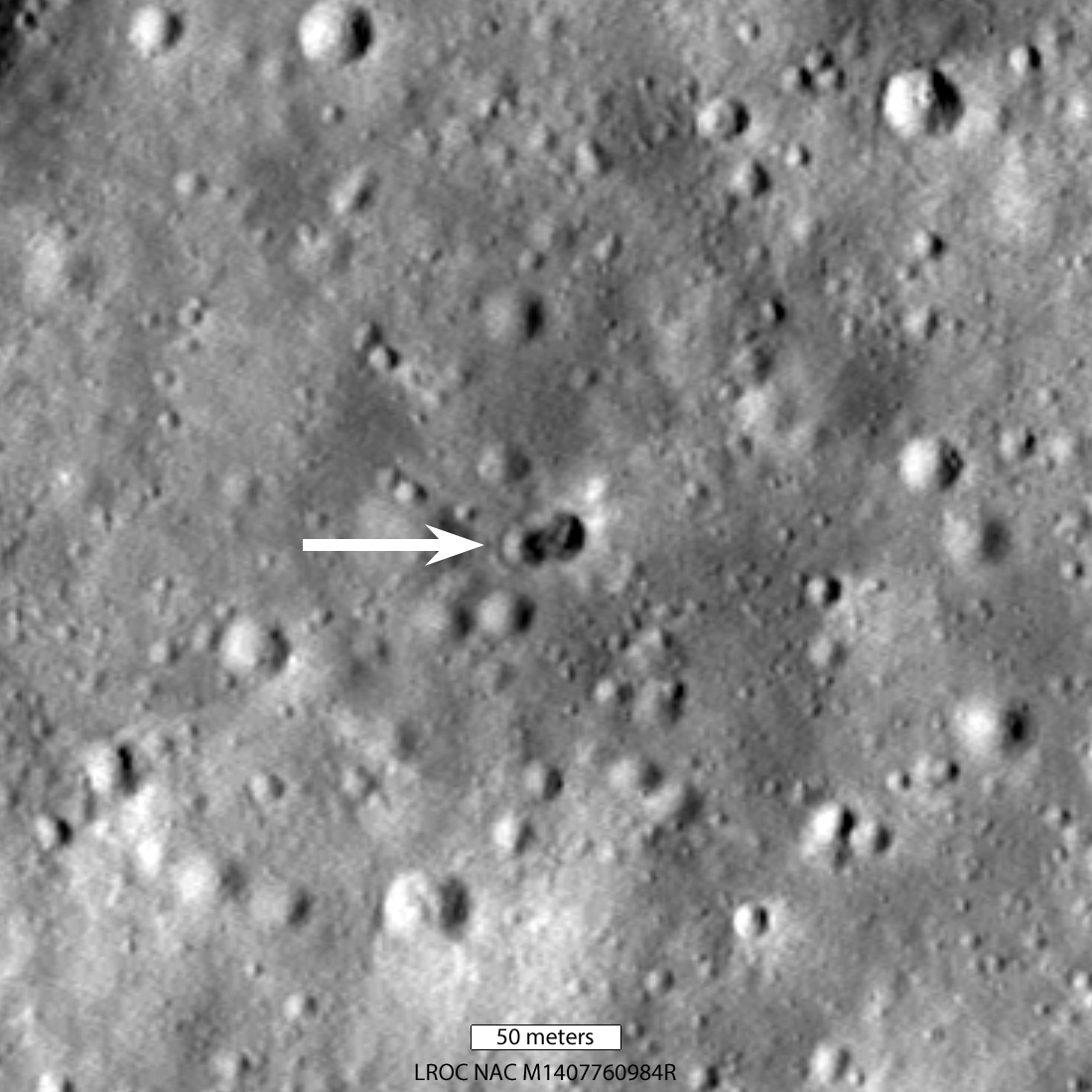
Mystery Rocket Body Found!
A rocket body impacted the Moon on 04 March 2022 near Hertzsprung crater, creating an apparent double crater, roughly 28 meters wide in the longest dimension. LROC NAC M1407760984R enlarged 3x [NASA/GSFC/Arizona State University].
Published on 23 Jun 2022
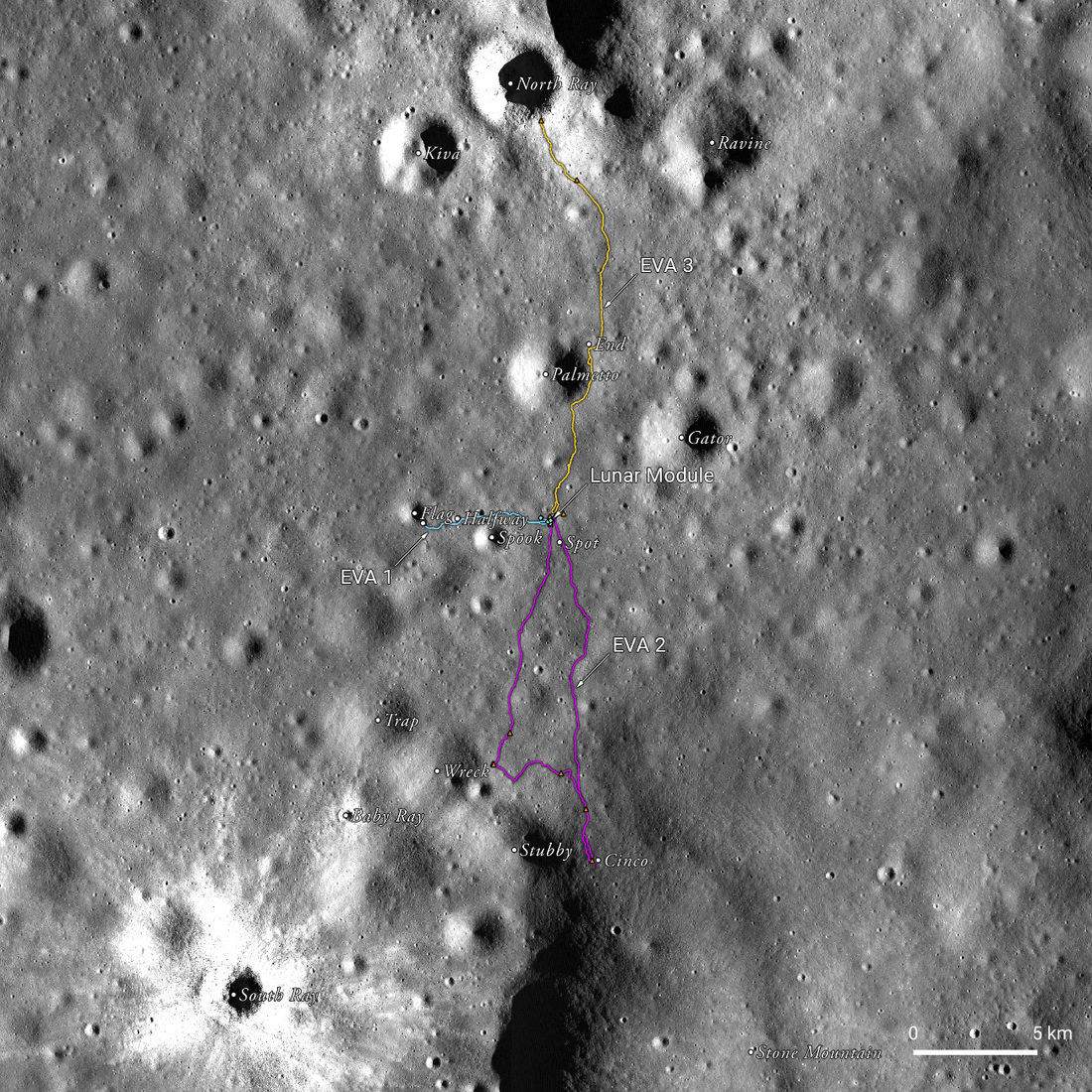
Apollo 16 50th Anniversary: A New Landscape
A spectacular, labeled view of the Apollo 16 landing site between North Ray and South Ray craters in the Descartes Highlands, a new landscape for the crew and an exciting set of LROC team products to help celebrate the 50th anniversary...
Published on 20 Apr 2022
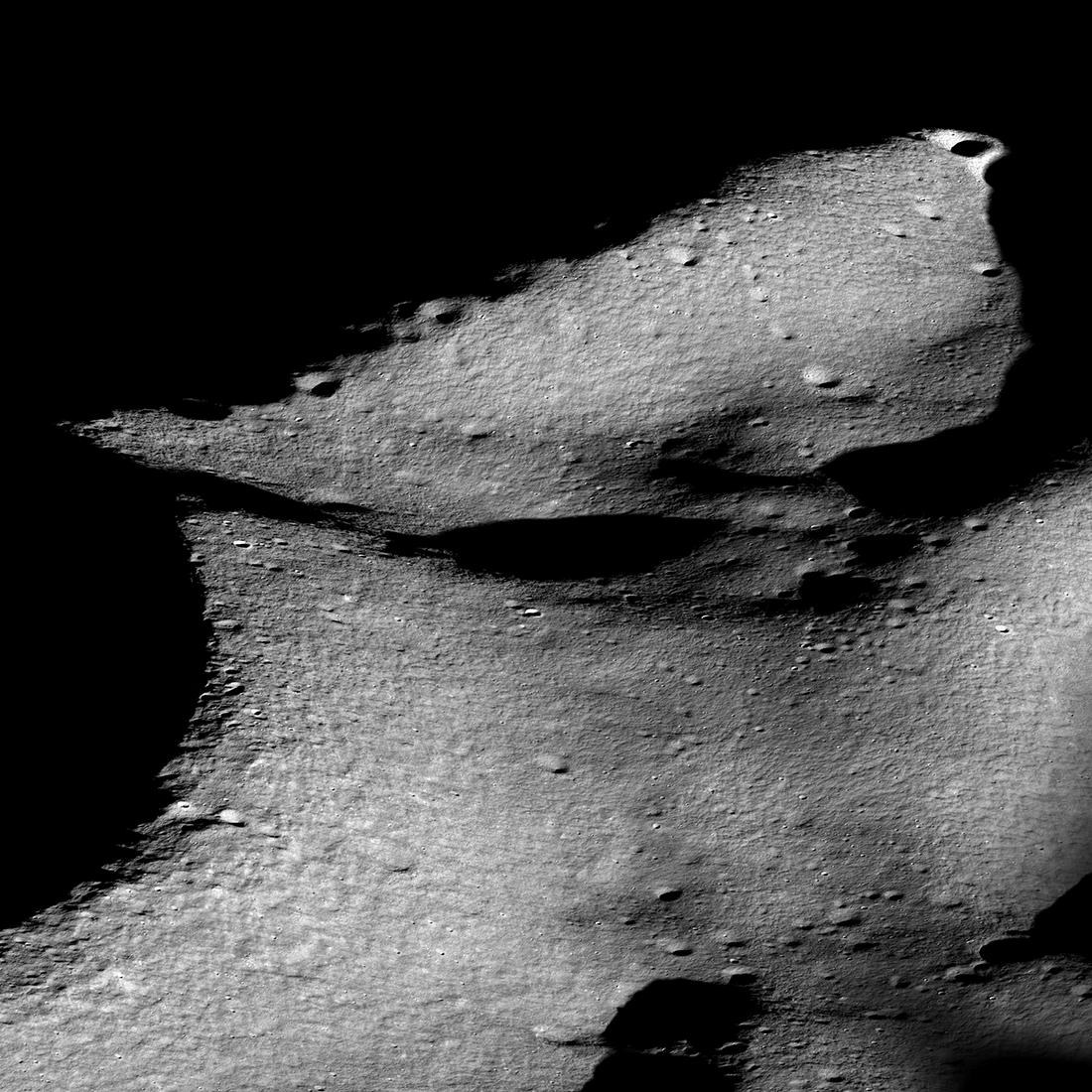
Traversing the Shackleton de Gerlache Ridge
Amazing oblique view of the rim of Shackleton crater (on the left) and the Shackleton - de Gerlache ridge that runs from middle left to upper right. The south pole is near the small, sharp, bright crater on the rim of Shackleton (left...
Published on 01 Apr 2022
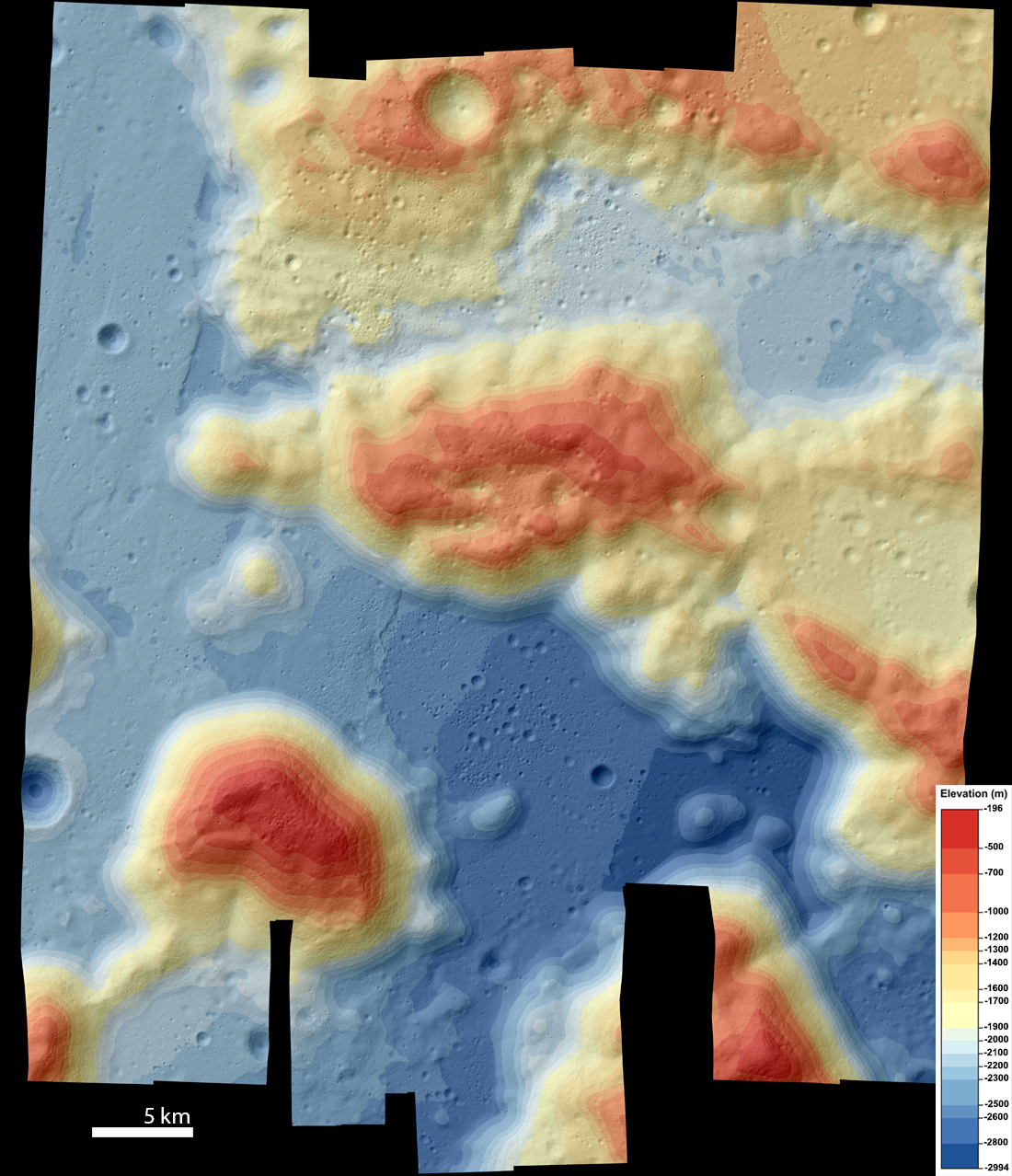
Topography of the Taurus-Littrow Valley
Color-shaded relief map of the Taurus-Littrow Valley (APOLLO17 DTM mosaic) made from eleven NAC stereo pairs [NASA/GSFC/Arizona State University].
Published on 11 Feb 2022
First to See the Farside
First photograph (BW) taken of the famous Apollo 8 Earthrise sequence, the following images were acquired with color film [AS08-13-2329, NASA].
Published on 24 Dec 2021
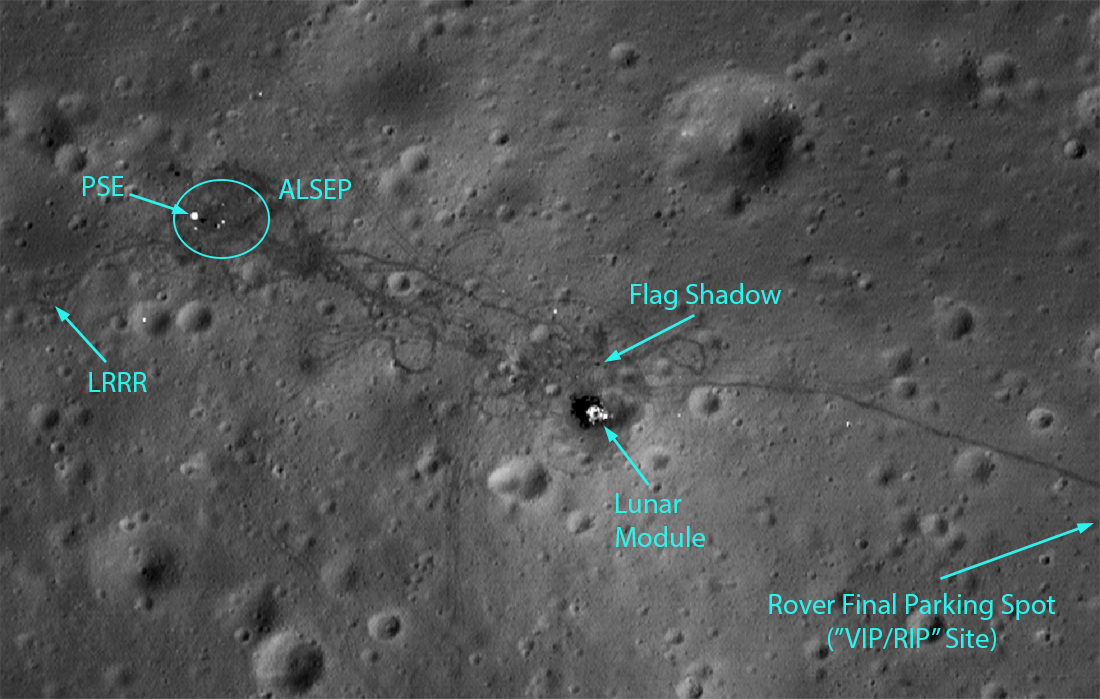
Apollo 15: A Mission of Many Firsts
Highlights of the Apollo 15 landing site, as seen in LROC NAC image M175252641R. This image has a resolution of 27 cm/px, and shows an area of 262 m by 186 m. The Lunar Module is clearly visible, as are many tracks from the Lunar Roving...
Published on 30 Jul 2021
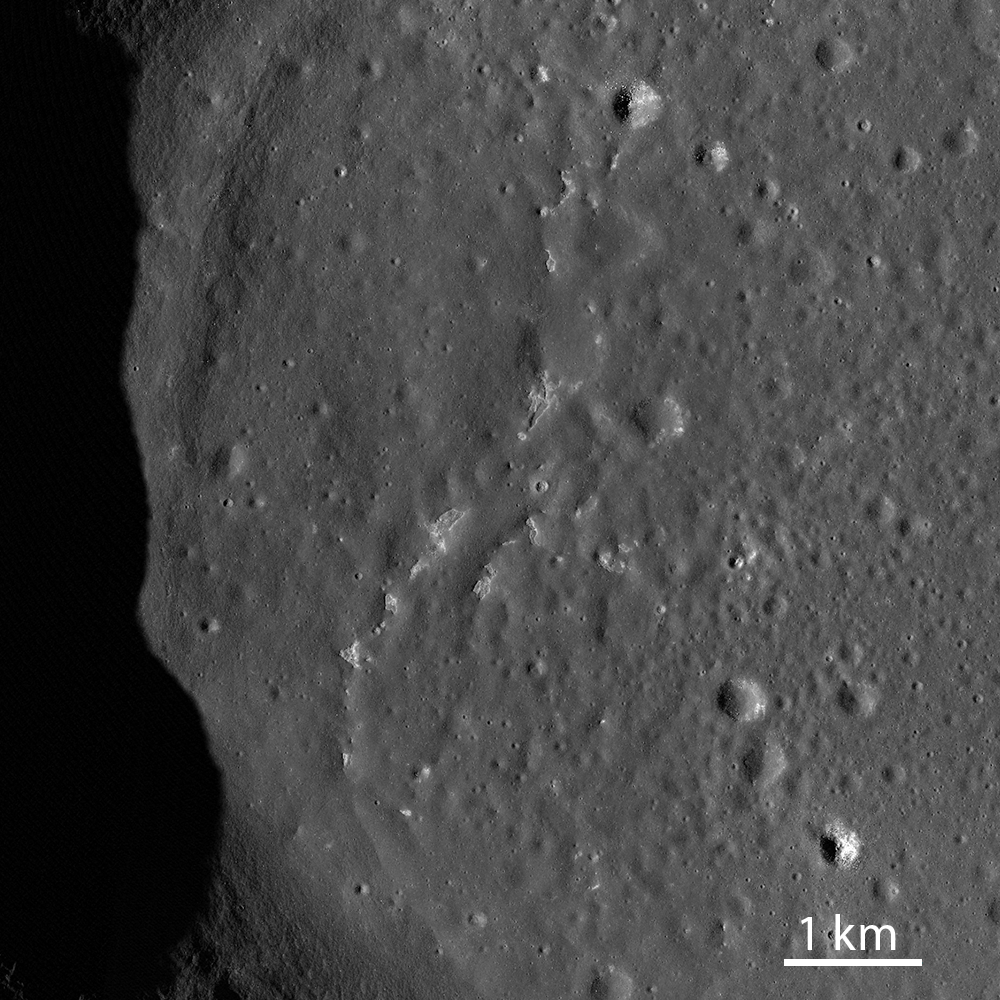
IMPs: Young Lunar Volcanism?
Irregular Mare Patch located inside Sosigenes Crater (8.7° N, 17.5° E), approximately 17 km across. NAC controlled mosaic containing images M1264703188L/R, M1264710221L/R, and M1264717254L/R [NASA/GSFC/Arizona State University].
Published on 24 Feb 2021
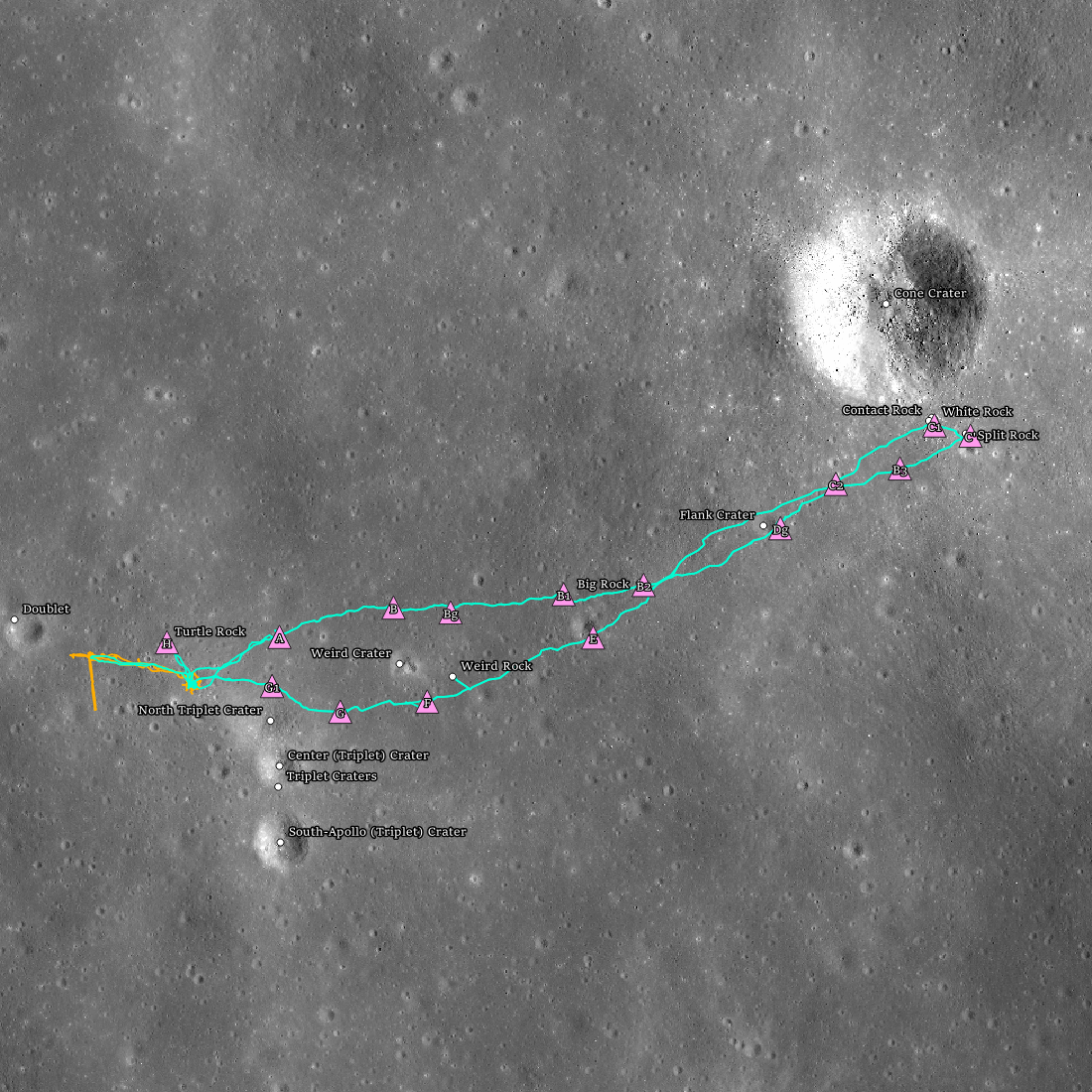
Apollo 14 Fiftieth Anniversary!
Apollo 14 landing site (4.646°S, 342.528°E) showing the two extra-vehicular activities (EVAs; orange = EVA1 and teal = EVA2) with stations (pink triangles), and geologic features (white dots).
Published on 05 Feb 2021
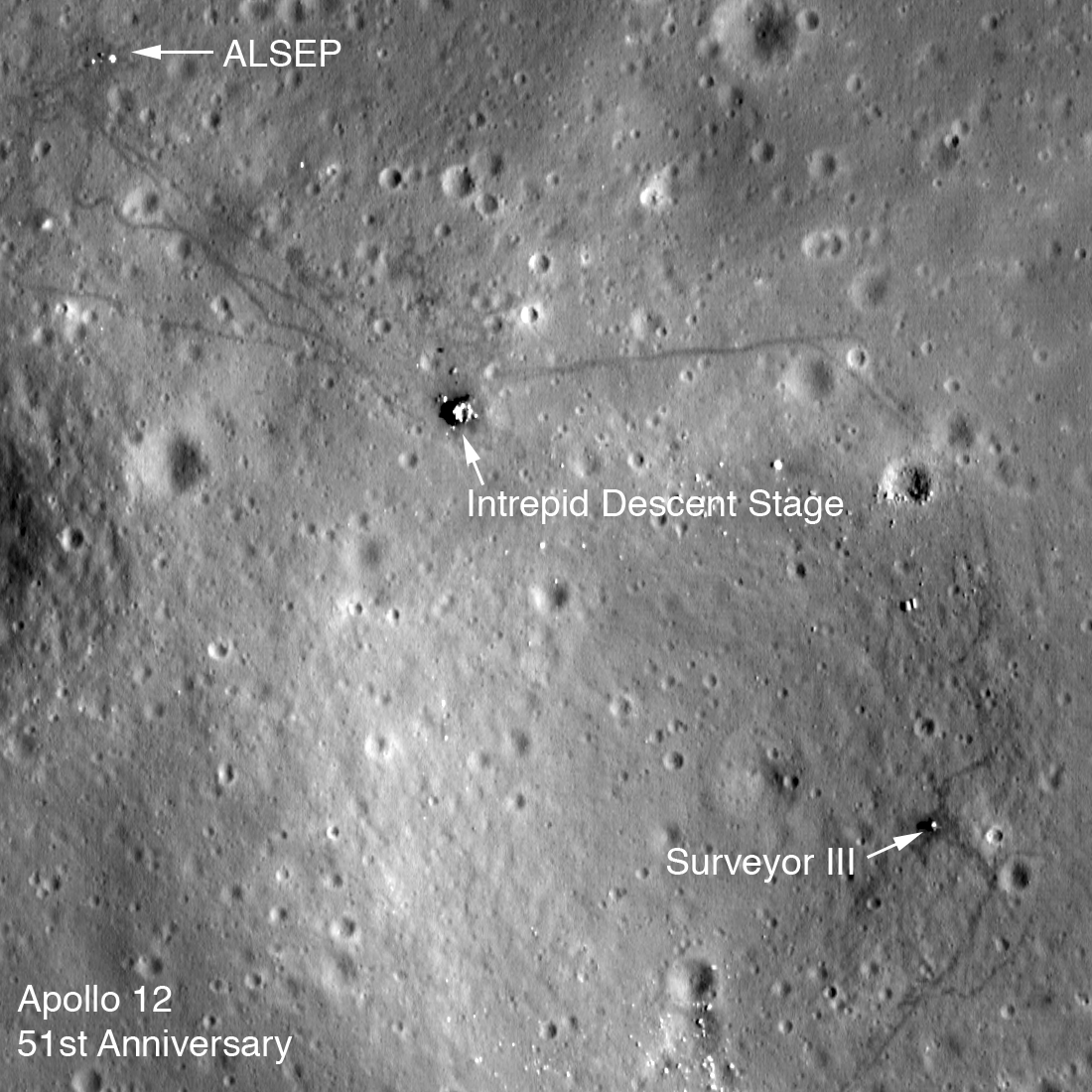
Apollo 12 Fifty-first Anniversary
LROC low-altitude image of the Apollo 12 landing site. The Lunar Module descent stage, Apollo Lunar Science Experiment Package (ALSEP), and Surveyor III spacecraft are all visible along with astronaut tracks. Image is 275 meters wide,...
Published on 13 Nov 2020
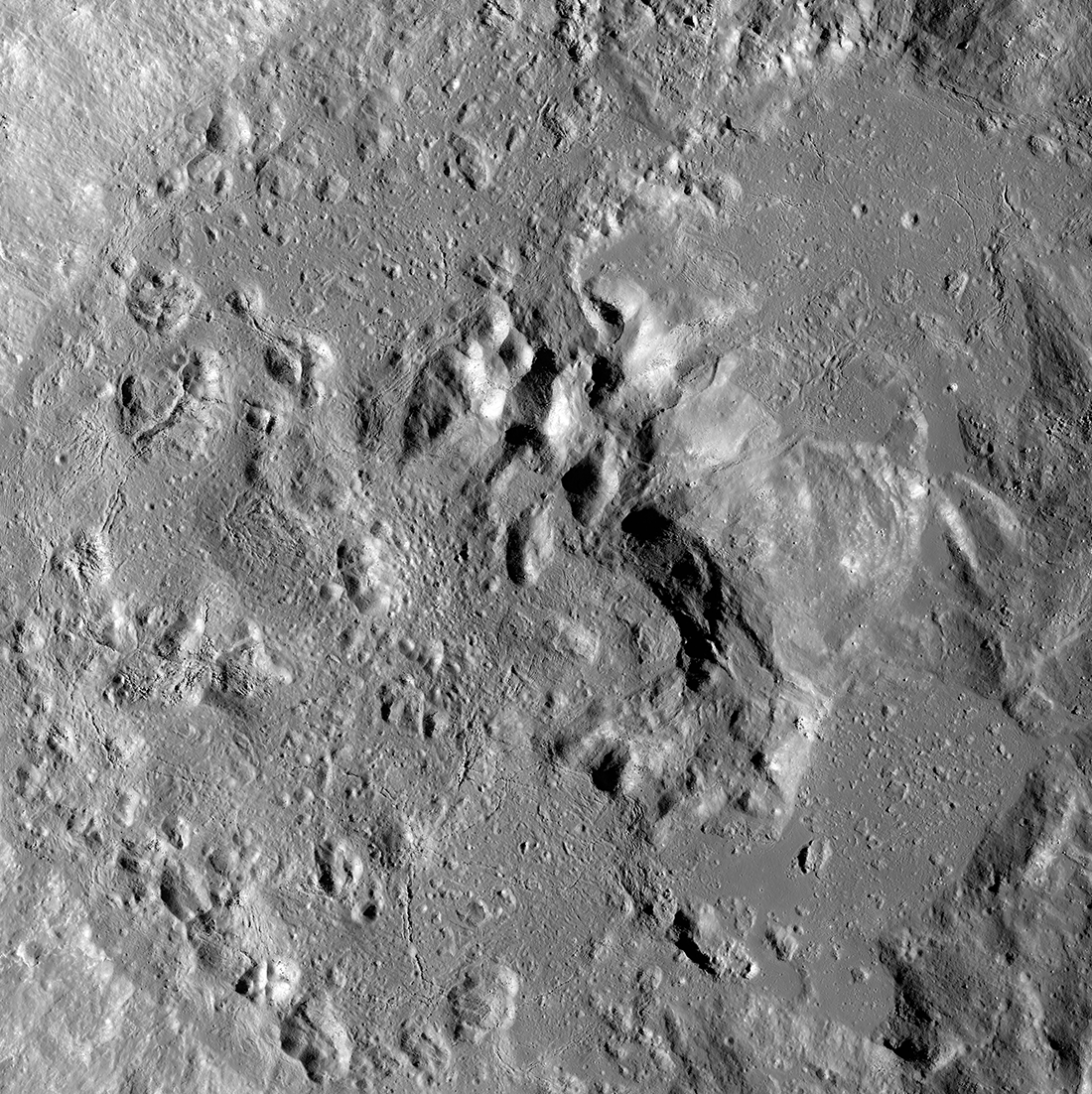
Farside Impact: Crookes Crater
During the formation of Crookes crater (48 km diameter, 10.39° S, 194.92° E), its central peak rebounded after the extreme compression from the high-speed impactor, and a small sea of impact melt eventually solidified on the crater...
Published on 27 Oct 2020
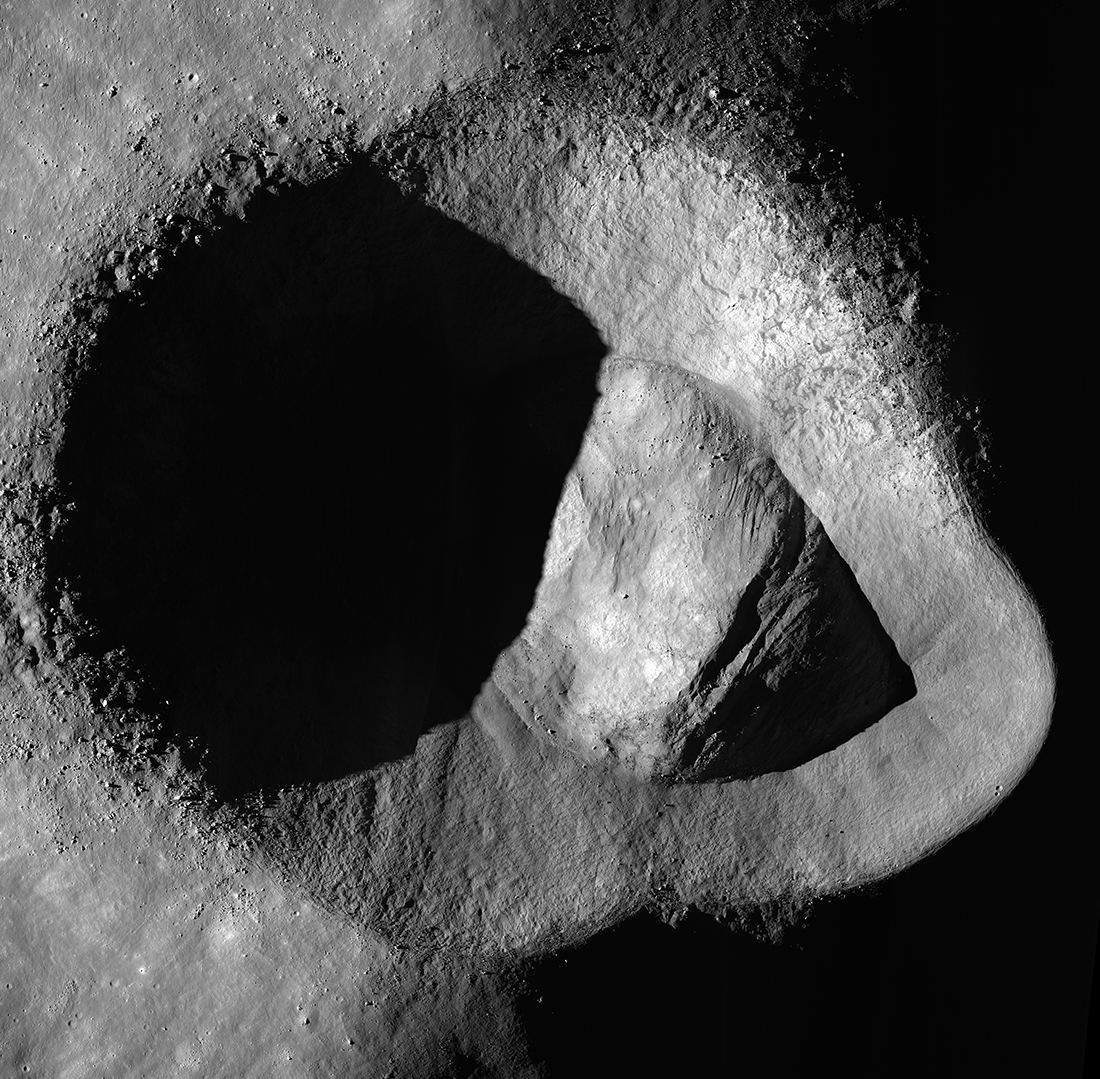
The Highs and Lows of Ryder Crater
Ryder Crater (13 x 17 km across) controlled Feature Mosaic; located at 43.8° S, 143.2° E, north is up, LROC NAC images M1172098182, M1172105288, and M1172112395 [NASA/GSFC/Arizona State University].
Published on 19 Oct 2020

A Lunar Donut: Bell E Crater
Bell E Crater (22.06° N , 264.06° E; ~16 km diameter) controlled feature mosaic made from images M1139534784L/R & M1139527672L/R [NASA/GSFC/Arizona State University].
Published on 02 Oct 2020
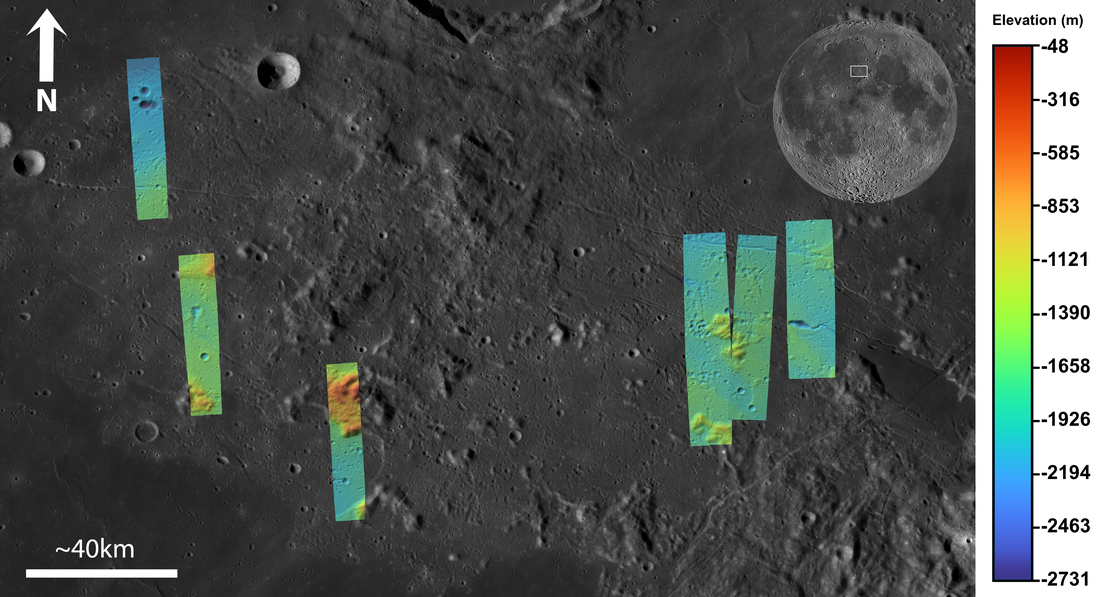
Apennine Bench Formation: A Window into Ancient Volcanism
LROC Wide Angle Camera (WAC) 100 m/px mosaic with 6 colorized Digital Terrain Models (DTMs) of the Apennine Bench Formation (centered near 26° N, 356° E - here in Quickmap), an enigmatic light plains unit located on the central lunar...
Published on 29 Jun 2020